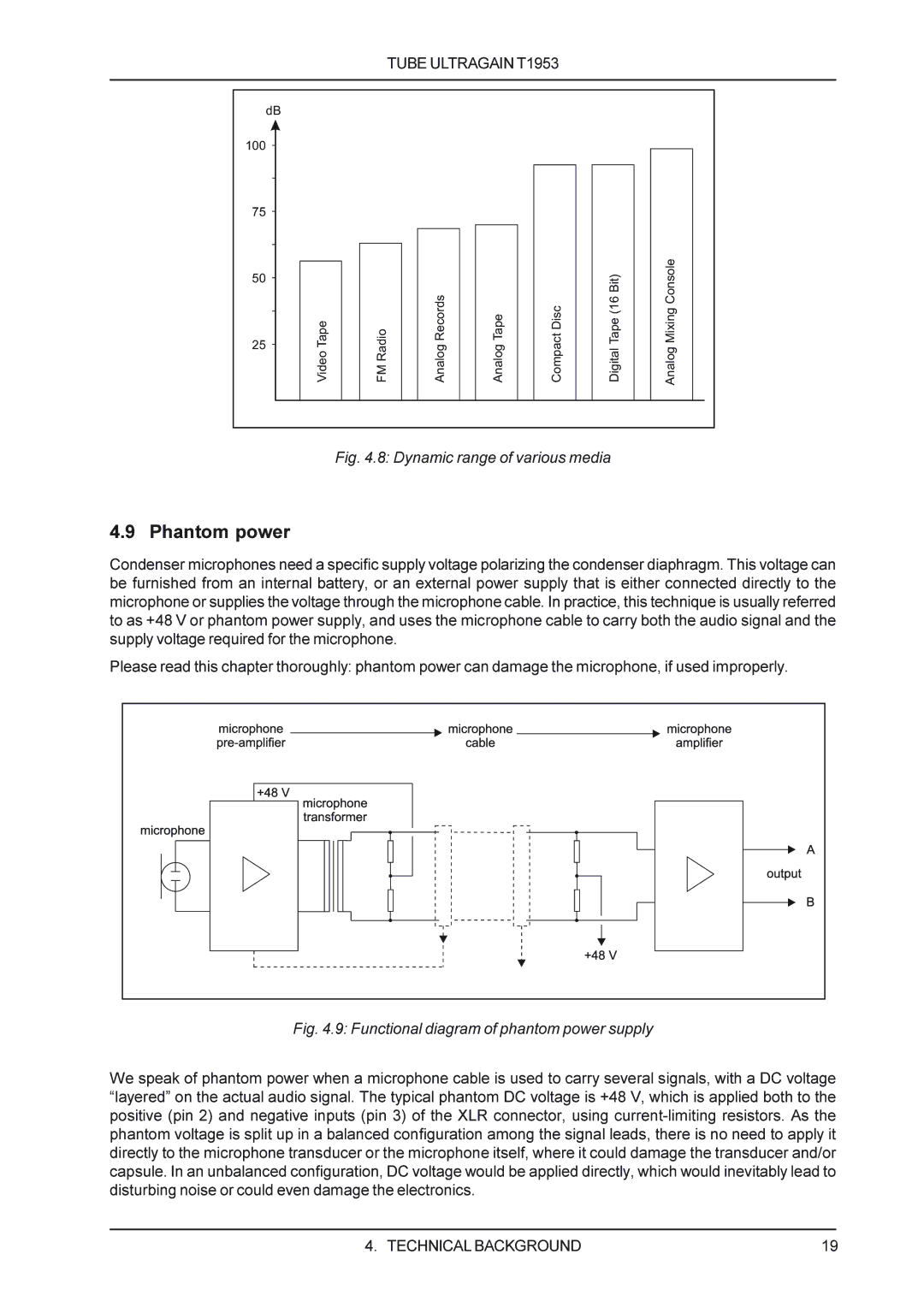
TUBE ULTRAGAIN T1953
dB |
|
|
|
|
|
|
100 |
|
|
|
|
|
|
75 |
|
|
|
|
|
|
50 |
|
|
|
| DigitalTape(16Bit) | AnalogMixingConsole |
25 | FMRadio | AnalogRecords | AnalogTape | CompactDisc | ||
VideoTape |
Fig. 4.8: Dynamic range of various media
4.9 Phantom power
Condenser microphones need a specific supply voltage polarizing the condenser diaphragm. This voltage can be furnished from an internal battery, or an external power supply that is either connected directly to the microphone or supplies the voltage through the microphone cable. In practice, this technique is usually referred to as +48 V or phantom power supply, and uses the microphone cable to carry both the audio signal and the supply voltage required for the microphone.
Please read this chapter thoroughly: phantom power can damage the microphone, if used improperly.
Fig. 4.9: Functional diagram of phantom power supply
We speak of phantom power when a microphone cable is used to carry several signals, with a DC voltage “layered” on the actual audio signal. The typical phantom DC voltage is +48 V, which is applied both to the positive (pin 2) and negative inputs (pin 3) of the XLR connector, using
4. TECHNICAL BACKGROUND | 19 |
